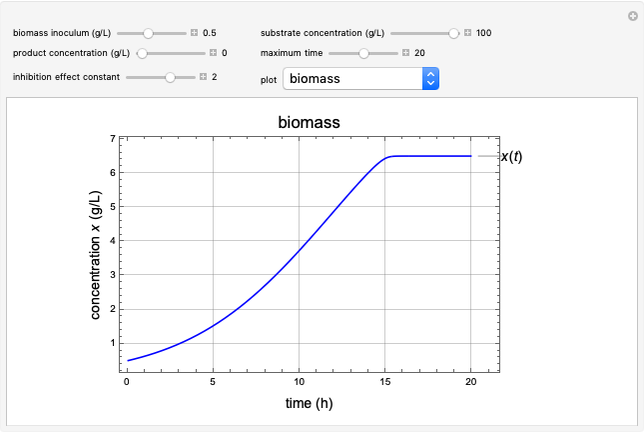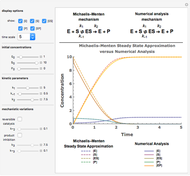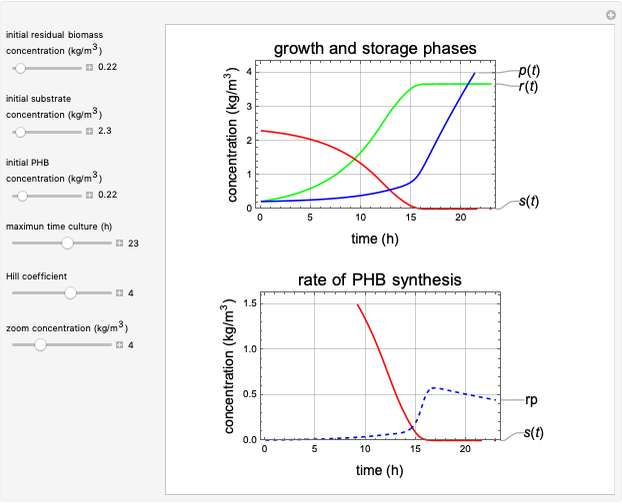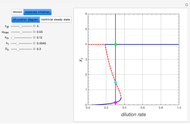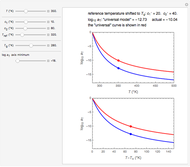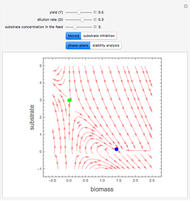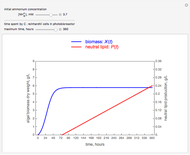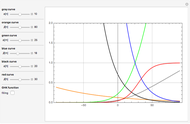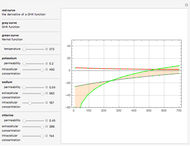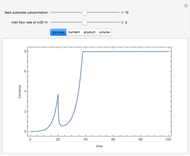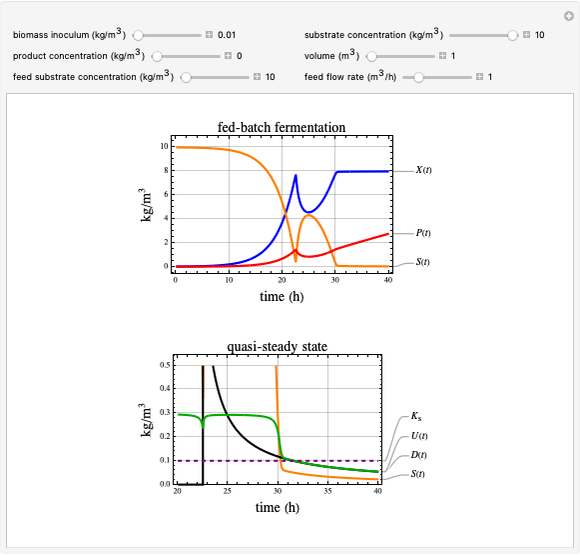Fed-Batch Fermentation and Quasi-steady State

Requires a Wolfram Notebook System
Interact on desktop, mobile and cloud with the free Wolfram Player or other Wolfram Language products.
This Demonstration shows a model for fed-batch fermentation, allowing for continuous feeding of a sterile substrate. The absence of outflow from the fermenter leads to an increase in volume. We study the characteristics of a quasi-steady state, of linear growth and of alternative feed strategies.
Contributed by: R. Ricardo Sánchez (January 2021)
Open content licensed under CC BY-NC-SA
Snapshots
Details
The operation begins with the selected initial batch conditions. Feeding of the substrate is started at 22.5 h. The break in the batch growth transient, as semi-batch feeding starts, is very apparent, with the transient continuing to an apparent quasi-steady-state operation condition. After 30 h,  , where
, where  is the dilution rate and
is the dilution rate and  is the specific growth rate.
is the specific growth rate.
Under these conditions, the biomass concentration  remains constant, while substrate concentration
remains constant, while substrate concentration  decreases below the saturation constant
decreases below the saturation constant  very slowly. The value of
very slowly. The value of  also decreases since the volume
also decreases since the volume  increases due to the incoming feed rate
increases due to the incoming feed rate  . Eventually,
. Eventually,  becomes equal to
becomes equal to  when
when  falls below
falls below 
During the quasi-steady state, the total biomass will increase linearly with time if the feed flow rate is constant.
Reference
[1] I. J. Dunn, E. Heinzle, J. Ingham and J. E. Prvenosil, Biological Reaction Engineering, Weinheim, Germany: VCH Verlagsgesellschaft mbH, 2003.
Permanent Citation






